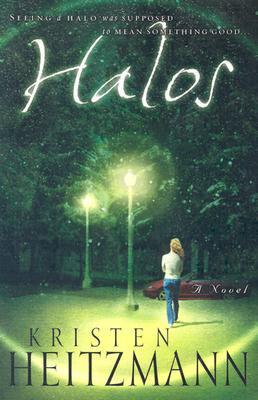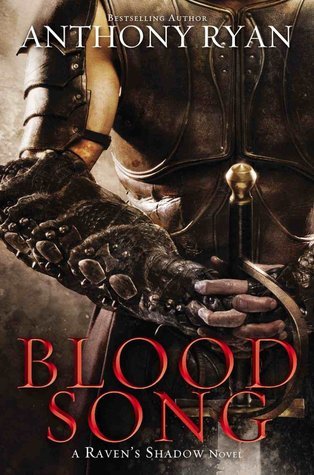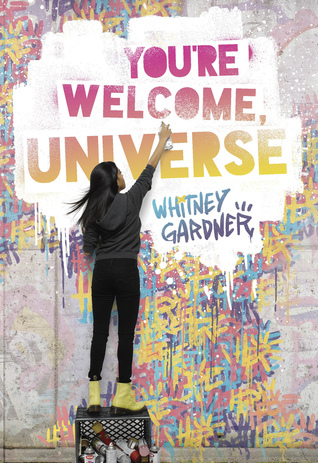Most Common Writing Mistakes, Pt. 64: POV Problems
 POV. Writers can’t live without it. It influences every aspect of story, right down to word choice. But in all frankness, sometimes POV can be a little hard for us to live with as well. The vastness and the complexity of the topic makes it all too easy for authors to accidentally stumble into POV problems. But fear not! Today, we’re going to clean everything up.
POV. Writers can’t live without it. It influences every aspect of story, right down to word choice. But in all frankness, sometimes POV can be a little hard for us to live with as well. The vastness and the complexity of the topic makes it all too easy for authors to accidentally stumble into POV problems. But fear not! Today, we’re going to clean everything up.
POV—short for Point of View–refers to the perspective from which a story is told. This might include:
3rd-Person POV
1st-Person POV
Omniscient POV
Multiple POVs
Basically, POV is the artifice of suggesting that the story is not being told from the author’s perspective but rather from the perspective of a character, the perspectives of multiple characters’, or sometimes even the perspective of a nameless narrator who while technically you is understood to not be you. (Confused yet?)
I frequently talk about the importance of strong, cohesive POVs. In a recent comment, Meghan Weyerbacher asked:
I am itching to read an example of what you think would be a sloppy character POV. Do you offer this anywhere? I am still on my first draft of my novel but want to learn as much as I can along the way.
Today, we’re going to examine the fundamental principles of excellent POV—and the four major pitfalls I see creating POV problems over and over again.
The Art of Strategic POV
When chosen strategically, POV contributes to the immersion of a carefully-crafted narrative designed to communicate a very specific experience to readers.
Great POV choices=great storytelling.
Poor POV choices=poor storytelling.
Truly, great POV is an advanced skill that will immediately set your book far above the pack. Great POV is one of the major “it” factors that tell readers, right from the beginning of the book, You can trust me—I’m awesome and totally know what I’m doing!
There are a few hallmarks of excellent POV:
1. Vision
POV should never, never, never be arbitrary. Let me say that again: NEVER. Great POV is built on the foundation of the author’s specific vision for the story. When you know what your story is about—on the levels of both plot and theme—you’re able to deliberately make POV choices that contribute to that vision.
2. Consistency
Random POVs? Also bad. When you view POV as the frame that shapes your entire narrative, you realize it is a powerful tool for providing readers with a consistent reading experience. Stories that lean into strong, consistent POVs, rather than randomly popping in convenient narrators, create a much more polished and professional storyform.
3. Control
The fundamentals of POV are all about control. One POV=one narrator. And, yes, this is true even in an omniscient POV that looks into the minds of multiple characters. This means you must exercise absolute control in “staying in POV” and avoiding head-hopping.
4. Spark
Great POV is about so much more than just technical excellence. It’s also about spirit, surprise, memorability, verve, and entertainment. Great POVs bounce off the page thanks to strong narrative voices. They’re not just matter-of-fact tellings of the story; they’re evocative explosions of personality.
4 POV Problems You Should Avoid in Your Writing
Very often the best way to learn how to do something well is to first identify how to avoid doing it poorly (which is the whole point of this series of Most Common Writing Mistakes). In response to Megan’s question and in the interest of notching our stories up from good to great, let’s take a look at the top four examples of POV problems you should guard against in your writing.
1. Inconsistent Viewpoints
The first POV decision you have to make in writing any story is: What type of POV should I use?
The first of several choices you have to make is about what “person” the story will be told in. Although there are also a few experimental options, the following are the most prevalent and useful:
1st-person (I, me)
3rd-person (s/he, him/her)
Next comes choice of depth:
Omniscient (widest view of the story, not told from any one character’s POV, but rather from a distant, all-knowing narrator)
Tight (told strictly from only one character’s perspective per scene)
Deep (goes even further than “tight” to show the narrative from the POV character’s perspective, rather than simply telling or describing this person’s experience)
And then tense:
Past tense (this happened)
Present tense (this is happening)
There are no right and wrong choices. But whatever you choose, stick with it. Inconsistency in POV is one of the quickest tip-offs of an amateur narrative (and also one of the trickiest writing techniques for any of us to learn).
The ability to dip into any character’s perspective or experience is a heady feeling for any author. But as you learn to recognize the different types of POV, you will also learn how to limit your own narrative to your story’s advantage.
What Inconsistent POV Looks Like:
Take a look at this sloppy mess:
Alessi had the sensation she was being watched. She didn’t know the creepy guy who had stolen her car was stalking her. She resisted turning and acting like a paranoid fool. But as she started past the Laundromat, the creeping sensation of her spine grew, and when she heard a sound, she shot a glance over her shoulder. Stupid girl, the man thought, drawing back into the shadows.
 And now compare this to Kristen Heitzmann’s solid handle on her character’s POV in Halos:
And now compare this to Kristen Heitzmann’s solid handle on her character’s POV in Halos:
Again Alessi had the sensation she was being watched. She resisted turning and acting like a paranoid fool. But as she started past the Laundromat, the creeping sensation up her spine grew, and when she heard a sound, she shot a glance over her shoulder. She thought she saw something move into the shadows between the Hawkeye Gift Gallery and the Bennet’s Books front awning.
2. Too Many/Poorly Chosen Viewpoints
Here’s where we start getting into “advanced” POV problems. Most writers learn early on to avoid the basic problems of inconsistency with any individual POV. However, what many authors fail to recognize as equally vital is their choice of which characters, and how many, should be given POVs.
Everything in a story should be carefully chosen to contribute to an overall whole of cohesion and resonance. If this stands true when determining the importance of every scene’s presence in your story, it certainly stands just as much for every POV.
Here are guidelines for identifying and choosing the best POVs for your story:
1. The Fewer POVs the Better
Obviously, this is just a rule of thumb. Many successful books pull off dozens of POVs with beautiful aplomb. But the unique requirements of these stories (not to mention the authorial skill involved) will always be the exception to the rule.
Usually, you will accomplish a much stronger, more cohesive, more immersive, more resonant storyform by limiting the number of POV characters. Sometimes just a single narrator will be the best choice. Yes, fewer POVs will create limitations and challenges for showing all a story’s action. But most stories are better for forcing their authors to face a few challenging limitations (just ask Golden Hollywood).
2. Examine the Action
Keeping in mind that you’re striving for a minimum not a maximum of POVs, take a look at what you know about this story. Where is the plot going to take the characters? What’s going to happen? Which characters are going to be present at the most important events?
With a little ingenuity, it’s amazing how much action you can successfully convey to readers without needing a POV character to be right on there on the scene. But it’s best to examine the overall needs of the story’s plot before choosing POV characters. You won’t always know which character this story is even truly about until you figure out whose POV is most useful.
3. Examine the Climactic Moment
With the obvious practical considerations out of the way, take a moment to consider which POVs really matter to your story—on a thematic level.
How do you know? Easy. Look at your Climactic Moment. Which characters are involved in this final confrontation that definitively decides your conflict one way or another? These are (or should be) the characters who are most inherent to the story’s thematic arc. These are the most important characters in your story. These are your best and most obvious choices for POVs that will meaningfully contribute throughout the story.
This does not, of course, mean all the characters present at the Climactic Moment should be given POVs. But if they’re not present at the Climax, you have to question if they’re really important enough to get POVs earlier in the story.
What Poorly Chosen POVs Look Like:
For my money, Anthony Ryan’s fantasy trilogy Raven’s Shadow offers perfect examples of how to and how not to choose the right POVs.
 His first book Blood Song (my favorite read of 2017) was an incredibly solid and resonant read that featured just one POV: the protagonist’s.
His first book Blood Song (my favorite read of 2017) was an incredibly solid and resonant read that featured just one POV: the protagonist’s.
His second book Tower Lord veered from this formula to include three extra POVs. These POVs were well-executed—and yet, they still drastically weakened this second book. Unlike the first book, this one lacked focus, cohesion, and resonance in nearly every other respect (structure, theme, etc.), an unfortunate effect that was largely due to the unnecessary extra POVs.
3. Randomly Distributed Viewpoints
Okay, fewer POVs are better. Got it. So let’s say you’ve got a book with two POVs. The protagonist’s POV and one minor character. The protagonist’s POV is front center for 99% of the book. Then there’s just this one little POV scene that pops in toward the end of the book to offer an important snippet of info from a minor walk-on character. Surely, that’s okay, right?
Considering the tiny size of the anomalous POV scene, it’s not likely to upset the apple cart. But is it sloppy? Oh yeah.
Not only must you choose your POV characters wisely, you should also, optimally, be distributing those POVs in a consistent manner throughout the story. If a character’s POV shows up just once or twice, you have to question whether it’s really necessary. And then question again: Is it really so necessary that it’s worth creating a bump in your story’s otherwise strong and seamless narrative?
When selecting POV characters, you should be examining if it’s possible (or how to make it possible) for these POVs to show up at regular intervals throughout your story. This does not mean a secondary POV must be given exactly the same number of scenes as your protagonist. But it does mean that if it’s going to show up in the second half, it needs to be introduced in the first. Preferably it will appear at least once in every quarter of the book, creating a consistent pattern readers will recognize and lean into.
Doing so not only prevents the jarring effect readers experience when they run into a completely strange POV deep in the book, it also enhances thematic resonance by highlighting how the plot’s progression is impacting this secondary character at every juncture.
What Random POVs Look Like:
I see this one all the time in stories with average narrative control—in other words, stories that are functional but not artistic, decent but not great. One example that always comes to mind was in a popular fantasy that kept its focus on two main characters throughout only to suddenly, in the Third Act, jump randomly into the POV of a man who was a prisoner in a city about to be liberated.
This was his first appearance and he was never heard from again. His POV existed only to provide an outside perspective of the sounds of the siege the heroes were about to enact upon the city. It was totally extraneous and definitely not worth the bump of confusion when the narrative moved away from the familiar characters.
4. Weak Voice
Great POVs aren’t just about control, they’re also about style (said in a Kingsley Shacklebolt accent). They needn’t be blatantly flamboyant, but they must never be ordinary.
A compelling narrative voice is ultimately all about breathing life into a character (even if that “character” is an unnamed omniscient narrator). It creates a story that couldn’t possibly be read aloud in a dry monotone, but rather one that offers its own inherent inflection and verve.
Great voice usually starts with great characters. But, sometimes, great characters are born of a great voice. The key word is personality. Seek to make each voice distinctive to the narrating character, even if the differentiations are subtle. Look for lively word choices and interesting constructions.
What Weak Voice Looks Like:
My TBR pile is now literally five feet high (not counting e-books). I’m not adding anything to that pile unless it looks amazing. And how can I tell it’s amazing? Voice is always the first thing I examine. I use Amazon’s “Look Inside” feature to read the opening paragraph.
Is the voice a bland “I was doing graffiti”?
 Or is it an opinionated directive that tells me this author (and this character) knows exactly what this book is supposed to be about, as in You’re Welcome, Universe by Whitney Gardner:
Or is it an opinionated directive that tells me this author (and this character) knows exactly what this book is supposed to be about, as in You’re Welcome, Universe by Whitney Gardner:
Six stencils in and it’s gone. Okay, the tag vanished by Stencil Number Two, but I have a point to prove. I’m not covering your scribbled slur with just anything. I’m making art here. I’m creating. I’m on fire.
If you’re uncertain how to write a living, breathing voice for a POV character, ask yourself: What is one sentence I can write from this person’s POV that will tell readers exactly who she is?
Start there. Then right another one.
***
As a reader, nothing makes me happier than an author’s mastery of POV. And… nothing makes me grumpier than sloppy POVs. So here’s to writing strong stories told confidently through excellent POV choices. (Because trust me, you really, really don’t want me to be grumpy.) Happy writing!
Wordplayers, tell me your opinion! What are your top votes for annoying POV problems? Tell me in the comments!
http://www.podtrac.com/pts/redirect.mp3/kmweiland.com/podcast/mistake-64.mp3
Click the “Play” button to Listen to Audio Version (or subscribe to the Helping Writers Become Authors podcast in iTunes).
The post Most Common Writing Mistakes, Pt. 64: POV Problems appeared first on Helping Writers Become Authors.



